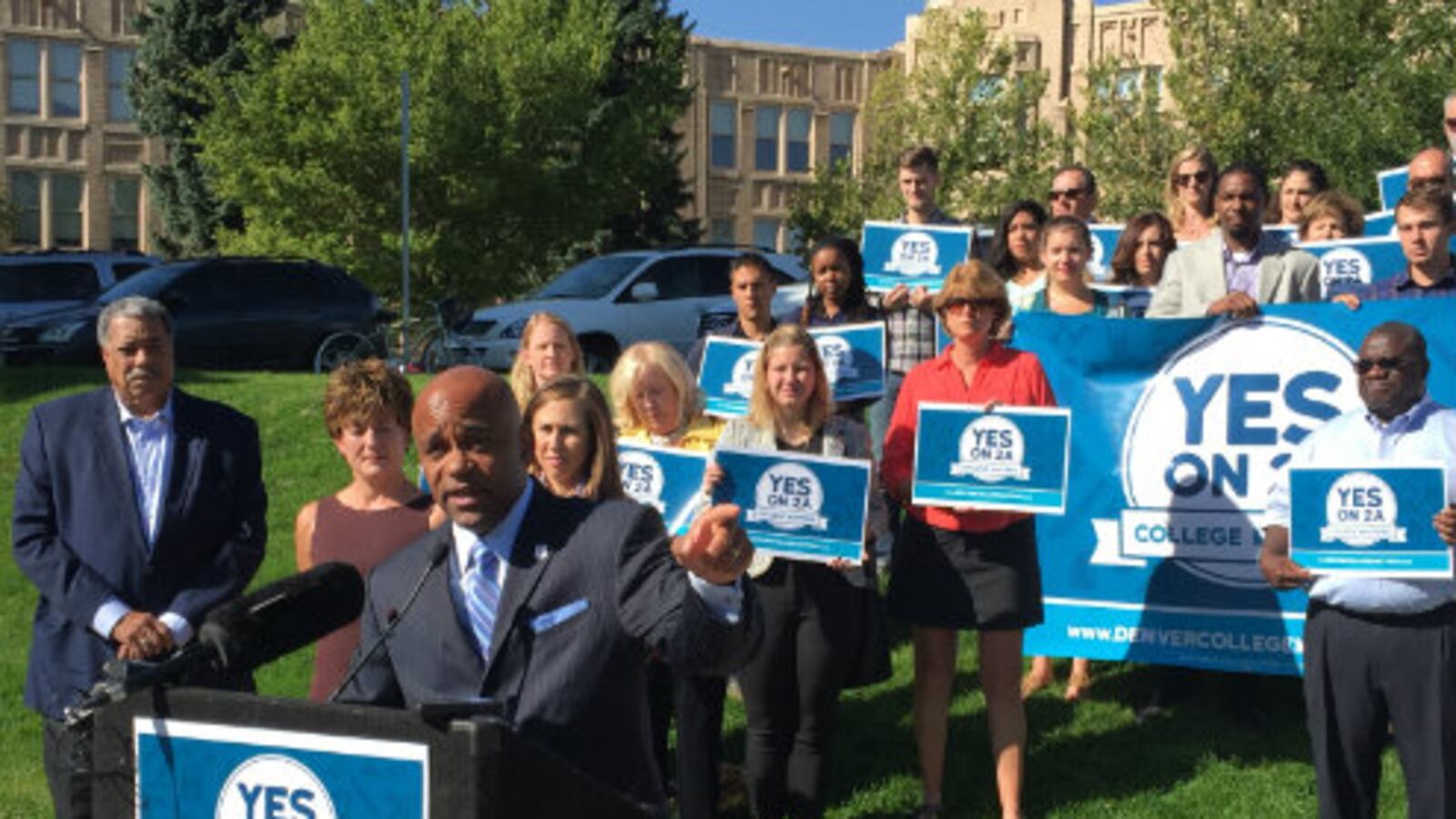Denver voters Tuesday rejected a measure that would have raised taxes to subsidize college scholarships.
Final unofficial results showed voters rejected Measure 2A by a margin of 52 percent to 48 percent.
The proposal was born out of concerns by some education and civic leaders that more needs to done to make college more affordable, particularly for lower-income and first-generation students.
That concern was heightened by the fact that state budget constraints make it virtually impossible for state government to increase its commitment to financial aid, which now totals about $125 million a year.
The Denver proposal took a different approach to financial aid than the traditional direct grants to students that are paid to colleges to offset students’ bill. The Denver College Affordability Fund was structured to funnel most of its money to non-profits like the Denver Scholarship Foundation, which provide scholarships to students.
The fund was set up to reimburse those non-profits for part of the scholarships they give, provided that the students stay in college and are successfully advancing. Nonprofits also would receive funding to support the counseling and support programs they provide to help students stay in college.
Higher education leaders increasingly believe that such support services are key to keeping students in college and advancing towards a degree.
“Literally billions of dollars are spent on kids who never graduate,” said Lt. Gov. Joe Garcia, referring to federal Pell Grant, a major source of financial aid nationwide. Garcia also is director of the state Department of Higher Education and a leading advocate for broadening access to higher education.
Garcia also has been involved in a state program called the Colorado Opportunity Scholarship Initiative (COSI), which is structured in a fashion similar to the Denver proposal.
The lieutenant governor says such programs don’t exist elsewhere in the county and acknowledges they are experiments that may or may not have an impact.
Part of the experiment is encouraging other local communities to start similar programs. Garcia was asked about the problem of a Denver student having access to support while a similar student just across the city limits in Lakewood or Aurora doesn’t.
“What we want to see if Lakewood come up a program,” Garcia said. The goal is “to spark more community-based initiatives.”
Advocates also hope that providing even modest amounts of government funding to scholarship programs will inspire businesses and foundations to devote more funding to financial aid.
The Denver program would provide only a modest contribution to the state’s overall financial aid picture.
Colorado students receive about $2.1 billion in financial aid a year, according to the state higher education department. About half of that is loans, and about half of grants are provided by colleges and universities.
Asked about the size of unmet need, Garcia said the department has tried to estimate that but hasn’t been able to come up with a solid figure. Several years ago, the department looked into expanding the state’s aid program but concluded “there just wasn’t a pot of money anywhere big enough,” he said.
The campaign for 2A has been low-key and not focused on the intricacies of the plan. Some city council members and city Democratic leaders have opposed it, arguing that college financial aid isn’t a municipal responsibility.
Funded by $150,000 from former New York Mayor Michael Bloomberg and money from other donors, a last-minute TV ad campaign launched last week to shore up support for the plan.
Details of 2A
- Imposes a .08 percent increase in sales and use taxes to fund the Denver College Affordability Fund, to be administered by a seven-member appointed board.
- Raises an estimated $10.6 million annually.
- Revenue would be used for grants to non-profits for scholarships and support services. Some funds also would help students with loan repayment.
- Program would sunset in 10 years
- Eligible students would have to be three-year Denver residents attending non-profit or state colleges and be no older than 25. Recipients would have to maintain satisfactory
- Eligibility determined on a sliding scale of family income.

